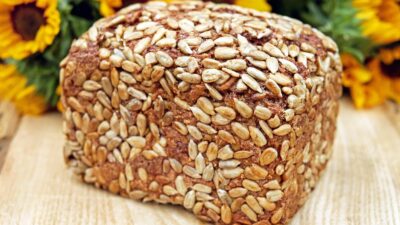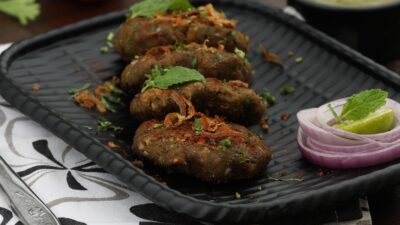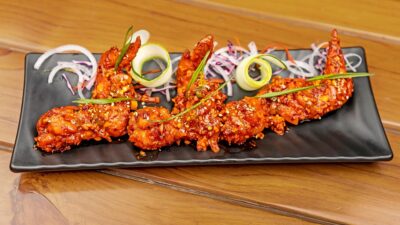In recent years, food blogging has evolved into a vibrant community and a serious career path for many. With the rise of social media, particularly platforms like Instagram and TikTok, food blogging now has an even wider reach, captivating audiences who crave culinary inspiration. But what does it truly take to succeed in this competitive landscape? Let’s dive behind the scenes and explore the essential elements of a successful food blogging journey.
1. Passion for Food and Cooking
At the heart of every influential food blogger lies an undeniable passion for food and cooking. It’s this enthusiasm that fuels creativity and keeps bloggers motivated to explore new recipes, culinary techniques, and dining experiences. Whether you’re whipping up a simple meal at home or experimenting with avant-garde dishes, the love for food is what will resonate with your audience.
2. Developing a Unique Niche
In a saturated market, having a distinct voice and niche is vital. Successful food bloggers often carve out specialized areas, whether it’s vegan baking, quick weeknight meals, international cuisines, or healthy eating. Identifying and honing a niche helps to attract a dedicated audience and builds a recognizable brand. For instance, Rachel Ray’s quick 30-minute recipes or Minimalist Baker’s simple plant-based dishes are prime examples of effective niche blogging.
3. Culinary Skills and Knowledge
While you don’t need to be a classically trained chef to be a food blogger, having a strong foundation in cooking techniques and food science is immensely beneficial. Bloggers should continually educate themselves about ingredients, cooking methods, and food trends. Engaging with culinary books, online courses, and food podcasts can provide readers with comprehensive and accurate information, enhancing the blog’s credibility.
4. Storytelling and Writing Skills
A food blog is more than just recipes; it’s a narrative. Engaging storytelling breathes life into a blog post and invites readers on a journey. The ability to communicate emotions and experiences surrounding food creates a connection with the audience. Whether recounting personal anecdotes, cultural significance, or simply sharing the enjoyment of cooking, compelling writing can elevate a blog.
5. Visual Aesthetics
Food blogging is a visual medium. High-quality photography is essential to attract readers and retain their interest. Mastering the art of food styling and photography can make a significant difference. From choosing the right lighting and angles to using props that complement the dish, visual presentation can convey the deliciousness of food. Even on mobile platforms, effective visuals are paramount in grabbing attention.
6. Consistent Posting Schedule
Consistency is key in maintaining and growing an audience. Whether you post once a week or once a month, establishing a regular schedule helps keep followers engaged. Planning content in advance can help bloggers stay organized and ensure timely postings. Using a content calendar to track recipe ideas, photography sessions, and writing deadlines can streamline this process.
7. Engagement with the Community
Building a comprehensive network is crucial. Engaging with readers through comments, emails, and social media not only fosters a sense of community but also encourages loyalty. Collaborations with other bloggers, participating in food photography challenges, or contributing to local food events can expand your reach and audience.
8. Understanding SEO and Marketing
To be successful, food bloggers must understand the basics of Search Engine Optimization (SEO) and digital marketing. Keywords, meta descriptions, and backlinks can significantly increase visibility in search engines, attracting more readers. Social media platforms also serve as effective tools for promotion; learning how to leverage different platforms is essential for growth.
9. Monetization Strategies
Many food bloggers aspire to turn their passion into profit. Exploring various monetization strategies like affiliate marketing, sponsored posts, and creating cookbooks or meal-planning services can help generate income. However, it’s crucial to maintain authenticity; always disclose partnerships and work with brands that align with your values.
10. Adaptability and Resilience
Lastly, the digital landscape is ever-changing. Food bloggers must be adaptable to trends, audience preferences, and platform algorithms. Resilience plays a pivotal role in managing challenges, whether it be a decline in traffic or occasionally unsatisfactory engagement. Embracing feedback and evolving based on analytics can pave the way for long-term success.
Conclusion
Embarking on a food blogging journey is both exciting and demanding. While it necessitates creativity, culinary skills, and savvy business practices, the rewards of connecting with food enthusiasts and sharing passions can be extraordinary. By understanding the multifaceted nature of food blogging and committing to continuous learning, aspiring bloggers can carve their paths in this dynamic realm. So, gather your ingredients, fire up the stove, and let your unique voice resonate in the food blogging world!



